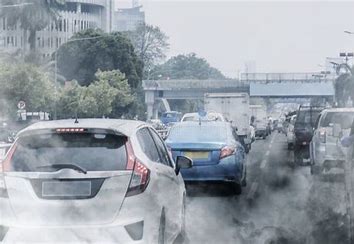Carbon Monoxide Effects?
You can’t see, taste, feel, or smell carbon monoxide (CO). However, this deadly gas can make you very sick or even kill you. Over 500 people in the United States die every year after breathing too much CO. The signs of CO poisoning seem like the flu. Many people don’t even know they’ve been breathing in CO. People who survive can suffer brain damage, lose their sight or hearing, or have heart problems. It is a major threat to your family’s health. The good news is that you can prevent CO poisoning.
Determine if your home’s air is safe and healthy.
There can be so much CO in a burning building that breathing smoke for as little as one minute can kill you. Lower levels, such as from smoking, do not kill right away. They can cause many other health problems, though. Children, unborn babies, people with asthma, older adults, or people with heart or lung problems are more likely to get hurt from breathing CO. But remember, CO harms even healthy people.
Where Does CO Come From?
It comes from Fuel-burning appliances that use gas, oil, or wood to produce heat. If they are not working right, they can make CO. Most gas appliances put in and taken care of properly are safe and make very little CO, but unvented appliances may not. Electric appliances do not burn fuel, and so make no CO. Common sources of CO include:
• Gas and oil furnaces, boilers, and water heaters
• Wood-burning fireplaces and stoves
• Gas appliances like ovens, stoves, or dryers
• Gas and kerosene space heaters
• Gas and charcoal grills
• Cars, trucks, campers, tractors, and other vehicles
• Gasoline and liquid propane-powered small equipment, including lawnmowers, snow blowers, chainsaws, pressure washers, and electric generators
• Recreational vehicles, including boat motors, all-terrain vehicles (ATVs), ski-boats, and generators in campers and houseboats
• Tobacco smoke
• House fires
• Blocked chimneys and flues
Breathing in low levels of CO can hurt your brain, heart, or other parts of your body.
The brain is so short of oxygen that you cannot think clearly at high levels.
You lose control of your muscles and may be unable to move to safety. High-level CO poisoning can cause loss of consciousness, coma, and death.
There are simple but important steps to determine if your family is at risk for CO poisoning.
The questions on the following
What are the Signs of CO Poisoning?
People often think CO poisoning is the flu. That’s because it can feel like the flu. Signs of low-level CO poisoning may include:
• Headache
• Nausea
• Vomiting
• Dizziness
• Confusion
• Tiredness
• Weakness
• Sleepiness
• Tightness in the chest
• Trouble breathing
• Changes in senses of sight, smell, hearing, touch and taste.











